Saturday, July 21 2018
 Our round Round Robin Blog this month is about how we deal with voilence and danger in our writing. I don’t write suspense (at least not yet) or action adventure. I write romance and there’s a certain expectation of romance readers that does not include a lot of graphic violence or danger. But in spite of that, we live in a world surrounded by violence so the inclusion of it, at least the knowledge that it’s there, is a must if we want to make our books current and real. Danger puts us on the edge our seats and keeps us turning pages. If nothing is at stake, there is no story. Our round Round Robin Blog this month is about how we deal with voilence and danger in our writing. I don’t write suspense (at least not yet) or action adventure. I write romance and there’s a certain expectation of romance readers that does not include a lot of graphic violence or danger. But in spite of that, we live in a world surrounded by violence so the inclusion of it, at least the knowledge that it’s there, is a must if we want to make our books current and real. Danger puts us on the edge our seats and keeps us turning pages. If nothing is at stake, there is no story.
*
In my most recent book, KEEPING HIS PROMISE, book 5 in the Camerons of Tide’s Way contemporary romance series, the issue of recidivism and young offenders becomes a wedge between my hero and heroine. Jon Canfield is a cop so he knows well, how easily young men with no good role models can be seduced into crime and how hard it is for them to get out of the abyss once they’ve gotten into the system, so he’s all for the new mayoral candidate’s project to create a Second Chance shelter for these young men. Having done their time and seen more of the criminal world than they wanted, these young offenders have a hard time finding employment, shelter or support to turn their lives around.  Leonard’s Place is all about giving them just what they need to succeed. But Kate Cameron Shaw sees it very differently. This is her small “safe” hometown and she has no intention of letting this idea get any traction and putting her kids and others in danger. She’s an investigative reporter and she’s focused on digging up any dirt she can to put a stop to the project. So there is the acceptance that violence and danger can be found anywhere, even in places people once felt safe from those awful things that only happen somewhere else, and Kate refers to many of them in her arguments against Leonard’s Place, but I don’t show them. Leonard’s Place is all about giving them just what they need to succeed. But Kate Cameron Shaw sees it very differently. This is her small “safe” hometown and she has no intention of letting this idea get any traction and putting her kids and others in danger. She’s an investigative reporter and she’s focused on digging up any dirt she can to put a stop to the project. So there is the acceptance that violence and danger can be found anywhere, even in places people once felt safe from those awful things that only happen somewhere else, and Kate refers to many of them in her arguments against Leonard’s Place, but I don’t show them.
*
In th is same book, I show Jon Canfield dealing with the aftermath of an argument between a teenage boy and his alcoholic mother and her abusive boyfriend, but again we don’t see the boyfriend abusing the woman, the mother hitting her son or the son punching the boyfriend. We know it happened and we see the emotional toll on the young man, but the actual violence does not happen on the page. Had this been a gritty story of a street cop dedicated to helping troubled youths, sexual abuse, the fist fight and the boy’s mother’s violence against her own child could have been shown in troubling detail, so it very much depends on what genre you are writing. Rape is a violent and ugly crime, but it is dealt with much differently in a police procedural than in a romance. Consider the difference between how a young woman who was drugged and raped at a frat party in college is shown on Law & Order – Special Victims Unit and how the same woman is dealing with the is same book, I show Jon Canfield dealing with the aftermath of an argument between a teenage boy and his alcoholic mother and her abusive boyfriend, but again we don’t see the boyfriend abusing the woman, the mother hitting her son or the son punching the boyfriend. We know it happened and we see the emotional toll on the young man, but the actual violence does not happen on the page. Had this been a gritty story of a street cop dedicated to helping troubled youths, sexual abuse, the fist fight and the boy’s mother’s violence against her own child could have been shown in troubling detail, so it very much depends on what genre you are writing. Rape is a violent and ugly crime, but it is dealt with much differently in a police procedural than in a romance. Consider the difference between how a young woman who was drugged and raped at a frat party in college is shown on Law & Order – Special Victims Unit and how the same woman is dealing with the  same offense in a Hallmark movie. The crime is the same and the violence is there, but in one we see the gritty details and in the other the troubling emotional aftermath. TV Viewers who love NCIS Los Angeles are addicted to the adrenalin rush of action, exploding buildings, crashing cars and gory murder scenes and they would be disappointed if the same story line were told without the mayhem. But people who enjoy Blue Bloods are perfectly satisfied to know someone got murdered, or even see a dead body briefly, and they follow Danny Reagan as he doggedly pursues the investigation into who did it. The violence is still there, just not on the screen as much. And if the same story were being told in a Hallmark movie, we probably wouldn’t see the body at all and Danny wouldn’t get into a physical confrontation as he pursues the murderer. same offense in a Hallmark movie. The crime is the same and the violence is there, but in one we see the gritty details and in the other the troubling emotional aftermath. TV Viewers who love NCIS Los Angeles are addicted to the adrenalin rush of action, exploding buildings, crashing cars and gory murder scenes and they would be disappointed if the same story line were told without the mayhem. But people who enjoy Blue Bloods are perfectly satisfied to know someone got murdered, or even see a dead body briefly, and they follow Danny Reagan as he doggedly pursues the investigation into who did it. The violence is still there, just not on the screen as much. And if the same story were being told in a Hallmark movie, we probably wouldn’t see the body at all and Danny wouldn’t get into a physical confrontation as he pursues the murderer.
*
 My new project is a mystery series with a female sheriff deputy detective assigned to crimes against people. She’s going to deal with murder, rape, and abuse and I’m going to have to show more of the actual action and violence than in my romance series if I want it to be successful. Exactly how much of that visual action I will show is going to be an experiment. I’ll have to let you know how it works out. Some of my favorite authors, which includes Lee Child and Vince Flynn, show lots of in your face violence. They let you into the heads of those committing it, as well. I think that’s going to be my biggest challenge. I can’t even begin to imagine myself ever wanting to hurt someone physically however angry they have made me so it will be a stretch for me to put myself in the shoes of someone who not only gives in to the urge but relishes it. I’m sure there are writers out there who find that creating a character who deserves to be beaten both physically and mentally and then going ahead and doing both on the page is a very cathartic way of relieving anger and My new project is a mystery series with a female sheriff deputy detective assigned to crimes against people. She’s going to deal with murder, rape, and abuse and I’m going to have to show more of the actual action and violence than in my romance series if I want it to be successful. Exactly how much of that visual action I will show is going to be an experiment. I’ll have to let you know how it works out. Some of my favorite authors, which includes Lee Child and Vince Flynn, show lots of in your face violence. They let you into the heads of those committing it, as well. I think that’s going to be my biggest challenge. I can’t even begin to imagine myself ever wanting to hurt someone physically however angry they have made me so it will be a stretch for me to put myself in the shoes of someone who not only gives in to the urge but relishes it. I’m sure there are writers out there who find that creating a character who deserves to be beaten both physically and mentally and then going ahead and doing both on the page is a very cathartic way of relieving anger and  frustration against real people they’d go to jail for beating up. Certainly, as readers, we feel justified and vindicated when the bad guy gets his just reward, is shot, beaten, jailed, found guilty or even killed. It isn’t always so in the real world, and we get satisfaction when it happens in our fiction. The good guy might get shot, beaten, threatened or have his house burned down, but he survives, and in the end when he triumphs we all cheer, close the book feeling satisfied and look for our next story fix. We all have different levels of violence we want to experience in the telling of the story, but we all want the chaos resolved and we want the good guy to win. frustration against real people they’d go to jail for beating up. Certainly, as readers, we feel justified and vindicated when the bad guy gets his just reward, is shot, beaten, jailed, found guilty or even killed. It isn’t always so in the real world, and we get satisfaction when it happens in our fiction. The good guy might get shot, beaten, threatened or have his house burned down, but he survives, and in the end when he triumphs we all cheer, close the book feeling satisfied and look for our next story fix. We all have different levels of violence we want to experience in the telling of the story, but we all want the chaos resolved and we want the good guy to win.
*
Check out these other authors and see how they deal with violence and danger in their writing.
*
Dr. Bob Rich https://wp.me/p3Xihq-1i2
Victoria Chatham http://www.victoriachatham.com
Connie Vines http://mizging.blogspot.com/
Anne Stenhouse http://annestenhousenovelist.wordpress.com/
A.J. Maguire http://ajmaguire.wordpress.com/
Marci Baun http://www.marcibaun.com/blog/
Skye Taylor http://www.skye-writer.com/blogging_by_the_sea
Fiona McGier http://www.fionamcgier.com/
Anne de Gruchy https://annedegruchy.co.uk/category/blog/
Rhobin L Courtright http://www.rhobinleecourtright.com
Judith Copek, //http://lynx-sis.blogspot.com/
Monday, July 02 2018
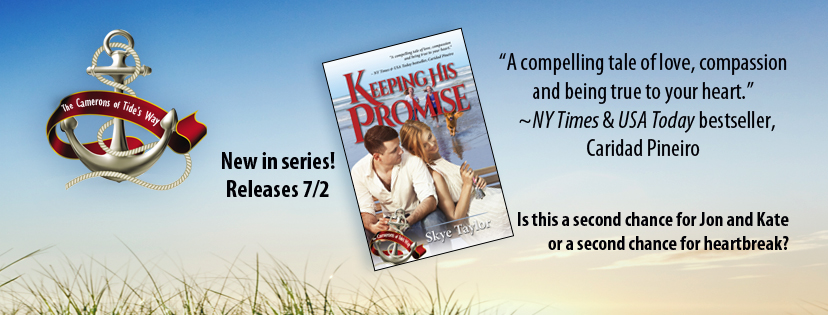
For my readers who've been eagerly awaiting the next in the Camerons of Tide's Way series - your wait is over. Kate's story is about to begin, and we are treated to another visit to Tide's Way.
@
 It begins with a new character we haven't met before, but he's been a part of Kate's life since she was a little girl. Now, Jon Canfield is a police officer on the small Tide's Way police force and hoping to become its chief when the current man retires at the end of the year. Jon has always had a thing for Kate, but before he found his teenage courage to do anything about it, he introduced her to his school friend Ethan Shaw and had to stand by and watch her fall head over heels in love with the other boy. As soon as Jon graduated high school, he joined the Marines thinking to put time and distance between himself and the woman he couldn't have, but eventually he returned to Tide's Way and joined its small police force. He bought an old fixer-upper, a stately older home that stood on a hill with a view of the ocean just a short way from the development where Ethan and Kate were now raising their two daughters. He's always been Kate's best friend and if that's all he can have, that's better than nothing. Then Ethan is killed by a drunk driver, Jon had turned on his lights to pull over. With his last breath, Ethan begs Jon to take care of "his girls." Blaming himself for the handling of the traffic stop and the awful results, Jon does his best to keep that promise without taking advantage and without letting his heart show while Kate grieves and moves on with her life. It begins with a new character we haven't met before, but he's been a part of Kate's life since she was a little girl. Now, Jon Canfield is a police officer on the small Tide's Way police force and hoping to become its chief when the current man retires at the end of the year. Jon has always had a thing for Kate, but before he found his teenage courage to do anything about it, he introduced her to his school friend Ethan Shaw and had to stand by and watch her fall head over heels in love with the other boy. As soon as Jon graduated high school, he joined the Marines thinking to put time and distance between himself and the woman he couldn't have, but eventually he returned to Tide's Way and joined its small police force. He bought an old fixer-upper, a stately older home that stood on a hill with a view of the ocean just a short way from the development where Ethan and Kate were now raising their two daughters. He's always been Kate's best friend and if that's all he can have, that's better than nothing. Then Ethan is killed by a drunk driver, Jon had turned on his lights to pull over. With his last breath, Ethan begs Jon to take care of "his girls." Blaming himself for the handling of the traffic stop and the awful results, Jon does his best to keep that promise without taking advantage and without letting his heart show while Kate grieves and moves on with her life.
@
 Kate followed Ethan to New York City to college and while there fell in love with journalism. While still in school she interned with a well knowns New York newspaper, and landed a entry level job there when she graduated while Ethan went on to Law School, which he hated but was doing because his father dreamed of adding "& Son" to sign over his law office door. But when Ethan's dad died freeing him from that commitment, he pursued his own dream in the area of culinary arts. When Kate's first pregnancy was difficult almost ending in her death in childbirth, Ethan was convinced that the hustle and stress of New York City was partly to blame and he brought her home to Tide's Way where he bought an old run-down restaurant and turned it into one of the town's best places to get ribs. Kate's second baby was born without complications and Ethan was sure that living in Tide's Way was the reason, so he was appalled when Kate wanted to move back to the city to pursue her career in journalism. It would mean giving up his restaurant and coping with city life - something he didn't want for himself or his young daughters. They rarely argued, but this issue sent Ethan storming from the house to cool off, but before he could return to apologize he was struck down by a drunk driver leaving Kate with a mountain of guilt, a restaurant to manage and two young girls to raise on her own. Kate followed Ethan to New York City to college and while there fell in love with journalism. While still in school she interned with a well knowns New York newspaper, and landed a entry level job there when she graduated while Ethan went on to Law School, which he hated but was doing because his father dreamed of adding "& Son" to sign over his law office door. But when Ethan's dad died freeing him from that commitment, he pursued his own dream in the area of culinary arts. When Kate's first pregnancy was difficult almost ending in her death in childbirth, Ethan was convinced that the hustle and stress of New York City was partly to blame and he brought her home to Tide's Way where he bought an old run-down restaurant and turned it into one of the town's best places to get ribs. Kate's second baby was born without complications and Ethan was sure that living in Tide's Way was the reason, so he was appalled when Kate wanted to move back to the city to pursue her career in journalism. It would mean giving up his restaurant and coping with city life - something he didn't want for himself or his young daughters. They rarely argued, but this issue sent Ethan storming from the house to cool off, but before he could return to apologize he was struck down by a drunk driver leaving Kate with a mountain of guilt, a restaurant to manage and two young girls to raise on her own.
@
 Kate landed a job with a paper in Wilmington and got on with her life. It wasn't New York City, but with Ethan gone and she being at least partly to blame, she remained in Tide's Way, learning how to be a single parent, manage Ethan's restaurant and hold down a job. Her best friend, Jon Canfield was always been there for her. He was her champion and protector when she tagged along with Jon and her brothers as a child, he introduced her to Ethan and took leave from the Marines to be at her wedding. And now he's doing his best to fulfill the promise Ethan forced him to make, watching the girls when Kate's responsibilities took her away from home, being a shoulder to lean on when grief seemed unbearable and a sounding board when she wasn't sure what she should do when decisions got tough. Kate landed a job with a paper in Wilmington and got on with her life. It wasn't New York City, but with Ethan gone and she being at least partly to blame, she remained in Tide's Way, learning how to be a single parent, manage Ethan's restaurant and hold down a job. Her best friend, Jon Canfield was always been there for her. He was her champion and protector when she tagged along with Jon and her brothers as a child, he introduced her to Ethan and took leave from the Marines to be at her wedding. And now he's doing his best to fulfill the promise Ethan forced him to make, watching the girls when Kate's responsibilities took her away from home, being a shoulder to lean on when grief seemed unbearable and a sounding board when she wasn't sure what she should do when decisions got tough.
@
 Then a freak storm sends Kate and her girls next door to Jon's for shelter when a huge tree comes down on their house requiring major repairs before they can return home. Kate begins to feel things for Jon she can't explain and he's finding it harder and harder to hide his own feelings. But standing between them and any kind of happy resolution is their individual guilt over Ethan's death and a totally divided opinion on the idea of creating a second chance home in their small town for non-violent ex-cons. Jon's a cop and he knows the rates of recidivism when young men who got on the wrong side of the law don't find help, employment or support when they try to turn their lives around. Kate is firmly in the "Not-in-my-Backyard" camp. How can they be fighting over this? Kate is appalled to discover Jon isn't supporting her view on this important issue. He's always been on her side of things -- until now! Then a freak storm sends Kate and her girls next door to Jon's for shelter when a huge tree comes down on their house requiring major repairs before they can return home. Kate begins to feel things for Jon she can't explain and he's finding it harder and harder to hide his own feelings. But standing between them and any kind of happy resolution is their individual guilt over Ethan's death and a totally divided opinion on the idea of creating a second chance home in their small town for non-violent ex-cons. Jon's a cop and he knows the rates of recidivism when young men who got on the wrong side of the law don't find help, employment or support when they try to turn their lives around. Kate is firmly in the "Not-in-my-Backyard" camp. How can they be fighting over this? Kate is appalled to discover Jon isn't supporting her view on this important issue. He's always been on her side of things -- until now!
@
 So, come on over to Tide's Way and settle in to see how Jon and Kate deal with the twists their lives have taken. If you've read the earlier books in the series you'll enjoy seeing Jake in action repairing Kate's house, Brianna and Zoe deep into the Save Jolee project and definitely with Kate on the second chance house issue, and Philip, retired from the Marines and loving his life and wife with a new baby in his arms and another on the way. You'll visit Sandy and Cam Cameron's beach house and sit down to dinner with the whole family. The Camerons are a big family with a lot of love to share, and they'd love to have you stop by. So, come on over to Tide's Way and settle in to see how Jon and Kate deal with the twists their lives have taken. If you've read the earlier books in the series you'll enjoy seeing Jake in action repairing Kate's house, Brianna and Zoe deep into the Save Jolee project and definitely with Kate on the second chance house issue, and Philip, retired from the Marines and loving his life and wife with a new baby in his arms and another on the way. You'll visit Sandy and Cam Cameron's beach house and sit down to dinner with the whole family. The Camerons are a big family with a lot of love to share, and they'd love to have you stop by.
   
Saturday, June 23 2018
 This month our Round Robin Blog questions is: Why do you write or feel compelled to write even through the difficult parts? This month our Round Robin Blog questions is: Why do you write or feel compelled to write even through the difficult parts?
*
Before I begin to write any book, I do a lot of character development and research. Ideas come to me from all over the place and I try to capture the essence of those ideas and save them to a file on my computer so the  thoughts don’t get lost. Then when the previous book is released and I’m on to the next adventure, I look at that idea file and whichever one grabs me as the most urgent, the one I want to follow, that’s where I start. But often, actually, for me there is always some research to do first. If it’s a historical, then I need to research the history, the speech patterns, the clothing and social mores. But even if it’s contemporary, I have to decide where it’s set – a real place, or one I’m going to make up? Where is it and what is that place like? City or small town? Seaside or mountains? Once I know that there is more research. Visiting the location if not a real town helps. Taking lots of photos, or cruising the internet, getting a “feel” for this setting. thoughts don’t get lost. Then when the previous book is released and I’m on to the next adventure, I look at that idea file and whichever one grabs me as the most urgent, the one I want to follow, that’s where I start. But often, actually, for me there is always some research to do first. If it’s a historical, then I need to research the history, the speech patterns, the clothing and social mores. But even if it’s contemporary, I have to decide where it’s set – a real place, or one I’m going to make up? Where is it and what is that place like? City or small town? Seaside or mountains? Once I know that there is more research. Visiting the location if not a real town helps. Taking lots of photos, or cruising the internet, getting a “feel” for this setting.
*
 Next step is developing my characters. Along with my original idea I usually have some thoughts about my protagonists, some of them sharp and clear, others not so clear. And secondary characters are very vague. I spend a lot of time on this process because my stories are more character driven than plot driven and I need to know them all very well to know what choices they will make when I start throwing problems at them. If they have families, I need to flesh those out as well. All your characters need lives and careers and unless they all have the same career as you or someone close to you, more research happens to flesh this part of their lives out. I need to know, for instance, if they have a job that might put them “on call” from time to time. This detail might actually become a plot point – you never know. Are they parents? What are those relationships like? So I develop a detailed backstory for all my main characters and a somewhat less detailed one for secondary characters. Next step is developing my characters. Along with my original idea I usually have some thoughts about my protagonists, some of them sharp and clear, others not so clear. And secondary characters are very vague. I spend a lot of time on this process because my stories are more character driven than plot driven and I need to know them all very well to know what choices they will make when I start throwing problems at them. If they have families, I need to flesh those out as well. All your characters need lives and careers and unless they all have the same career as you or someone close to you, more research happens to flesh this part of their lives out. I need to know, for instance, if they have a job that might put them “on call” from time to time. This detail might actually become a plot point – you never know. Are they parents? What are those relationships like? So I develop a detailed backstory for all my main characters and a somewhat less detailed one for secondary characters.
*
 When I wrote a hero who was a Marine, I didn’t attend boot camp, but I did have two Marines who were gracious in sharing all sorts of interesting information with me and answering endless questions. My brother, who served in Vietnam, generously recalled some of his experiences in that war, how they influenced his life and what it’s been like since for me when I was creating the back story for my hero in The Candidate. In my current project which is a mystery, my When I wrote a hero who was a Marine, I didn’t attend boot camp, but I did have two Marines who were gracious in sharing all sorts of interesting information with me and answering endless questions. My brother, who served in Vietnam, generously recalled some of his experiences in that war, how they influenced his life and what it’s been like since for me when I was creating the back story for my hero in The Candidate. In my current project which is a mystery, my  protagonist is a female deputy sheriff detective. I’ve done a lot of things in my life, but law enforcement has not been among them. It was quite an adventure going for a ride along with a real deputy sheriff. I learned a lot and even picked up some ideas for conflict in my story. My next adventure in research is to attend the 12-week Citizen’s Law Enforcement Academy. No, it won’t qualify me for a job, buy it will give me a very good idea of the life my heroine lives every day. protagonist is a female deputy sheriff detective. I’ve done a lot of things in my life, but law enforcement has not been among them. It was quite an adventure going for a ride along with a real deputy sheriff. I learned a lot and even picked up some ideas for conflict in my story. My next adventure in research is to attend the 12-week Citizen’s Law Enforcement Academy. No, it won’t qualify me for a job, buy it will give me a very good idea of the life my heroine lives every day.
*
Then the writing begins. Usually taking off with a lot of enthusiasm and energy. After all, I’ve spent so much time with these  people I’ve created, I’m eager to find out how they are going to make out. How their lives are going to change. And all the adventures along the way. people I’ve created, I’m eager to find out how they are going to make out. How their lives are going to change. And all the adventures along the way.
*
But then you come to the difficult parts. Perhaps you’ve hit a sagging middle and don’t’ know quite how to fix it. Or you’ve written your characters into a corner you haven’t figured out how to get them out of. Now the story feels more like a 10-mile forced march with an 80 pound rucksac full of gear than the eagerly anticipated adventure it was on page one. So, Why do I write or feel compelled to write even through the difficult parts?
*
 The answer is simple. I put these characters I’ve grown to care very much about into this situation and it’s up to me to get them out. I want that satisfying ending just as much as I hope my readers do. Besides, I’ve done a ton of work getting to this point and there’s something in me that refuses to abandon the project just because it got hard. The answer is simple. I put these characters I’ve grown to care very much about into this situation and it’s up to me to get them out. I want that satisfying ending just as much as I hope my readers do. Besides, I’ve done a ton of work getting to this point and there’s something in me that refuses to abandon the project just because it got hard.
*
Why do all these other great authors keep on when the keeping on gets tough?
Hop on over to their sites and find out…
Dr. Bob Rich
Marie Laval
Connie Vines
Beverley Bateman
Marci Baun
A.J. Maguire
Helena Fairfax
Anne Stenhouse
Diane Bator
Fiona McGier
Margaret Fieland
Rhobin L Courtright
Saturday, June 09 2018
 My dad was a mechanical engineer so perhaps that’s where he came by his ability to make things happen on his own when everyone else would have enlisted the help of half a dozen friends and a cooler full of beer. Over his lifetime he’d accumulated a metal and woodworking shop in his basement that could have rivaled any professional business and he’d managed to get all these pieces of heavy equipment into that basement with the use of pulleys, dollies, wedges and any other tool designed to gain mechanical advantage over heavy, unweildy machines. So maybe that’s where I got the idea that I could do anything if only I put my mind to it. My dad was a mechanical engineer so perhaps that’s where he came by his ability to make things happen on his own when everyone else would have enlisted the help of half a dozen friends and a cooler full of beer. Over his lifetime he’d accumulated a metal and woodworking shop in his basement that could have rivaled any professional business and he’d managed to get all these pieces of heavy equipment into that basement with the use of pulleys, dollies, wedges and any other tool designed to gain mechanical advantage over heavy, unweildy machines. So maybe that’s where I got the idea that I could do anything if only I put my mind to it.
*
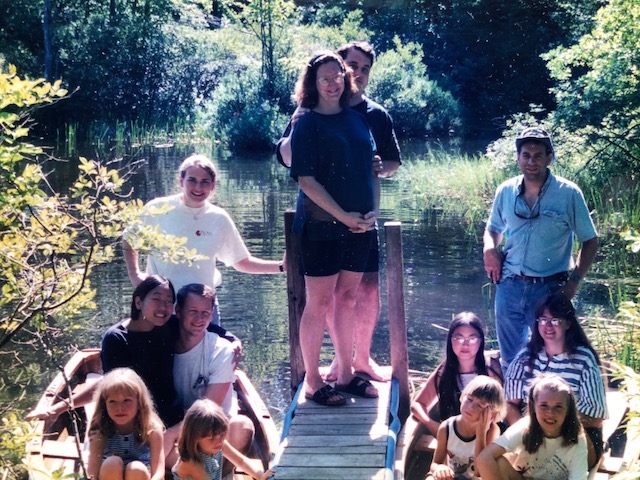 I had plenty of encouragement growing up, as you can imagine. I was also a first born and a bit stubborn so I was pretty sure I could pull it off, whatever the task was that I had in mind, even when the odds and opinion were against me. And for most of my life I fared pretty well. In spite of being married twice, I more or less raised four kids on my own and they all turned out to be well-adjusted, smart, loving and responsible adults. When my husband was wasting away from cancer, I painted our entire three story house I had plenty of encouragement growing up, as you can imagine. I was also a first born and a bit stubborn so I was pretty sure I could pull it off, whatever the task was that I had in mind, even when the odds and opinion were against me. And for most of my life I fared pretty well. In spite of being married twice, I more or less raised four kids on my own and they all turned out to be well-adjusted, smart, loving and responsible adults. When my husband was wasting away from cancer, I painted our entire three story house  by myself when I discovered my son was getting off the bus down the street so his friends wouldn’t see the ugly, peeling house he called home. I ran conferences and state gymnastic meets. I chaired committees and managed a church thrift shop. I figured out how to organize the office of an adoption and fostering agency that dealt with the regulations and laws in six states, and kept up with meeting all those requirements for the social workers. I’ve jumped out of perfectly good airplanes and earned my basic skydiver’s license. And I joined the Peace Corps at 56, stepping way out of my comfort zone to live and work in a very different culture on the other side of the world. My can-do attitude served me well. by myself when I discovered my son was getting off the bus down the street so his friends wouldn’t see the ugly, peeling house he called home. I ran conferences and state gymnastic meets. I chaired committees and managed a church thrift shop. I figured out how to organize the office of an adoption and fostering agency that dealt with the regulations and laws in six states, and kept up with meeting all those requirements for the social workers. I’ve jumped out of perfectly good airplanes and earned my basic skydiver’s license. And I joined the Peace Corps at 56, stepping way out of my comfort zone to live and work in a very different culture on the other side of the world. My can-do attitude served me well.
*
Until the advent of technology!
*
Becoming computer literate before Windows was a challenge but I rose to it. I managed to create my own website, through a lot of trial and error. I’ve more or less mastered the use of my smart phone which I freely admit is smarter than I am, and now I have a car with so much technology going on it will probably take me the entire three years of the lease to learn how to use it all.

Then I decided to self publish my next book. How hard can it be? Everyone else is doing it, and they all said it was a piece of cake. I knew enough to hire a professional editor and I found an equally talented lady do design my cover, but the rest was going to be up to me and CreateSpace. A friend, who assured me I could do this – after all, I’d jumped out of airplanes, surely I could master this, as well, or so she claimed - directed me to a slender little book titled, How to Format Your Novel for CreateSpace, by Roxanne Smolen. The book is tiny. 38 pages tiny. I skimmed through it and tackled the job.
*
It’s amazing how many things in the menu of my WORD program did not look like the screen shots in this book. It’s equally amazing how many terms I had absolutely NO clue about the meaning or where to find them. And humbling to discover I was not going to pull this off with my usual plucky attitude. I followed every direction down to the letter, but somehow the headers and footers were switching places on me when I was doing something else. I’d fix those and the  page numbers would disappear or appear in the wrong place. Change something half way through the book in a totally different section and guess what? Something changed in the front matter. After deciding my readers were never going to notice the few odd headers, I gave up and uploaded it to CreateSpace. 24 hours later I got the notice advising me there was a problem with pagination that I needed to fix. I spent and entire weekend fixing those numbers and finally, FINALLY, on Monday night I had a file with all the page numbers right and all the headers correct. I thankfully uploaded the new file, was presented with a review option and discovered to my dismay that somehow between my computer and CreateSpace’s program a dozen blank pages had appeared. They were NOT in the document I’d uploaded and even turning on the feature that page numbers would disappear or appear in the wrong place. Change something half way through the book in a totally different section and guess what? Something changed in the front matter. After deciding my readers were never going to notice the few odd headers, I gave up and uploaded it to CreateSpace. 24 hours later I got the notice advising me there was a problem with pagination that I needed to fix. I spent and entire weekend fixing those numbers and finally, FINALLY, on Monday night I had a file with all the page numbers right and all the headers correct. I thankfully uploaded the new file, was presented with a review option and discovered to my dismay that somehow between my computer and CreateSpace’s program a dozen blank pages had appeared. They were NOT in the document I’d uploaded and even turning on the feature that 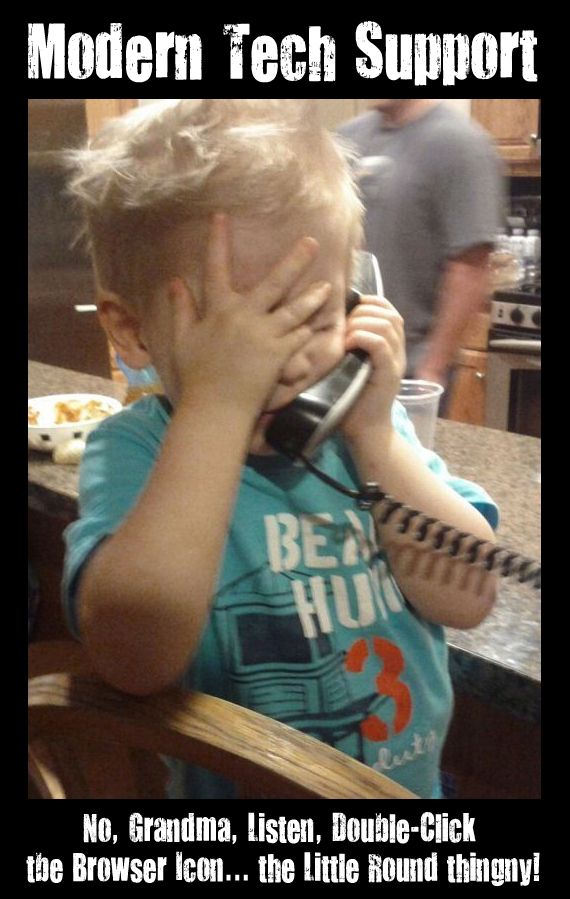 lets me see all my non-visual key strokes didn’t help. I was close to throwing the whole thing into the sea in frustration. Nothing in my life had prepared me for the fact that I can’t do everything just because I believe I can and want it bad enough. lets me see all my non-visual key strokes didn’t help. I was close to throwing the whole thing into the sea in frustration. Nothing in my life had prepared me for the fact that I can’t do everything just because I believe I can and want it bad enough.
*
Thankfully there are people out there who are steeped in this stuff and my friend who originally assured me I could do this myself dug out the business card of another lady she’d met somewhere who does formatting. I have NO idea what that lady did, but in a matter of minutes she had returned my manuscript to me, “fixed.” It looked the same to me, but I uploaded it anyway and the following day I was told it was approved. YAY! So, I am happy, but humbled. Maybe the next book will go smoother. Or then again, maybe not. At least I know who to ask when I finally admit I can’t do it all.
*
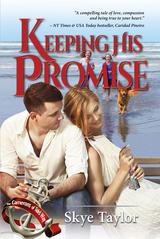 Look for KEEPING HIS PROMISE – Available now on all e-book platforms and in print. Look for KEEPING HIS PROMISE – Available now on all e-book platforms and in print.
    PRINT PRINT
Friday, May 25 2018
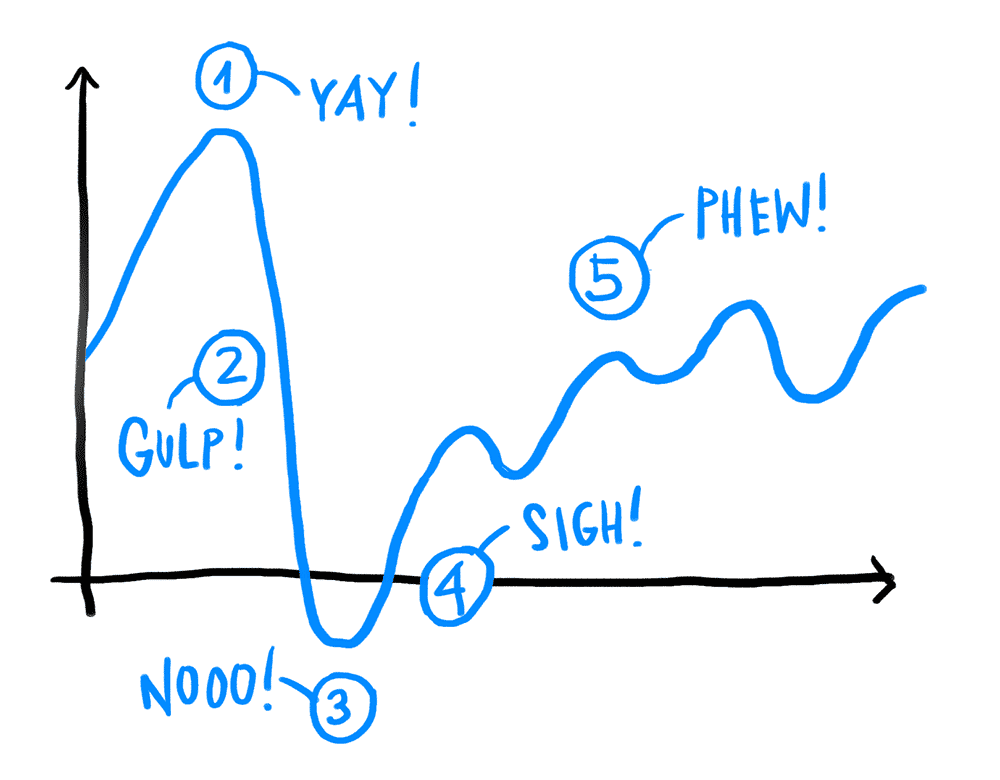 At least, that's what I keep telling myself. At least, that's what I keep telling myself.
After spending the better part of a year filled with family issues writing book five in my series, requested by my editor and then having her retire and the book turned down, I decided it was going to get published, even if I had to do it myself. So many authors are doing it, both new authors and some who've been traditionally published and on the best seller lists for years. So, why not me?
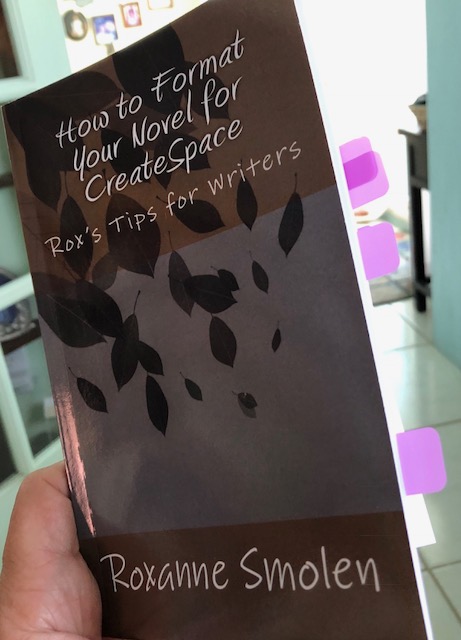 Following all the best advice, I paid for professional editing, and for the cover. I was fortunate with both these ladies as they did a bang-up job. A dear friend who happens to do content editing and publishing in her small one-woman operation assured me I could do the formatting and recommended a book which I promptly bought. It's a slim volume and very straight forward. How hard can this be? Following all the best advice, I paid for professional editing, and for the cover. I was fortunate with both these ladies as they did a bang-up job. A dear friend who happens to do content editing and publishing in her small one-woman operation assured me I could do the formatting and recommended a book which I promptly bought. It's a slim volume and very straight forward. How hard can this be?
Well, as it turns out . . . harder than you'd think. To start with, I'm a Mac user so  anyone I can consult for advice is usually using a different version of Word. Then there's the issue of me being technically challenged. I keep reminding myself that I managed, through trial and error to build my own website in spite of this personal failing. And I persevered. I'm still persevering. And I anyone I can consult for advice is usually using a different version of Word. Then there's the issue of me being technically challenged. I keep reminding myself that I managed, through trial and error to build my own website in spite of this personal failing. And I persevered. I'm still persevering. And I  will continue to persevere until Keeping His Promise is out and my readers who've waited far too long already for Kate's story to appear can dive in and find out what happens to the last of the Cameron kids from Tide's Way. So bear with me. I'm shooting for June 22nd. will continue to persevere until Keeping His Promise is out and my readers who've waited far too long already for Kate's story to appear can dive in and find out what happens to the last of the Cameron kids from Tide's Way. So bear with me. I'm shooting for June 22nd.
In the meantime, have a wonderful Memorial Day Weekend. Even if you don't attend any parades or visit any gravesites, take a moment to thank, in your heart, those who've sacrificed everything to protect the freedoms we all enjoy every day. Take a moment to honor them and contemplate the enormity of that sacrifice. Remember that from the days of the Revolutionary War to today in far flung places in the world, these men and women have put on the uniform of our country and gone out to do battle for an ideal and not come home to their own families. They leave behind grief stricken parents, heartbroken spouses and kids who will grow up without the love, guidance and support of their mother or father. All so you can enjoy all that America represents.

Saturday, May 19 2018
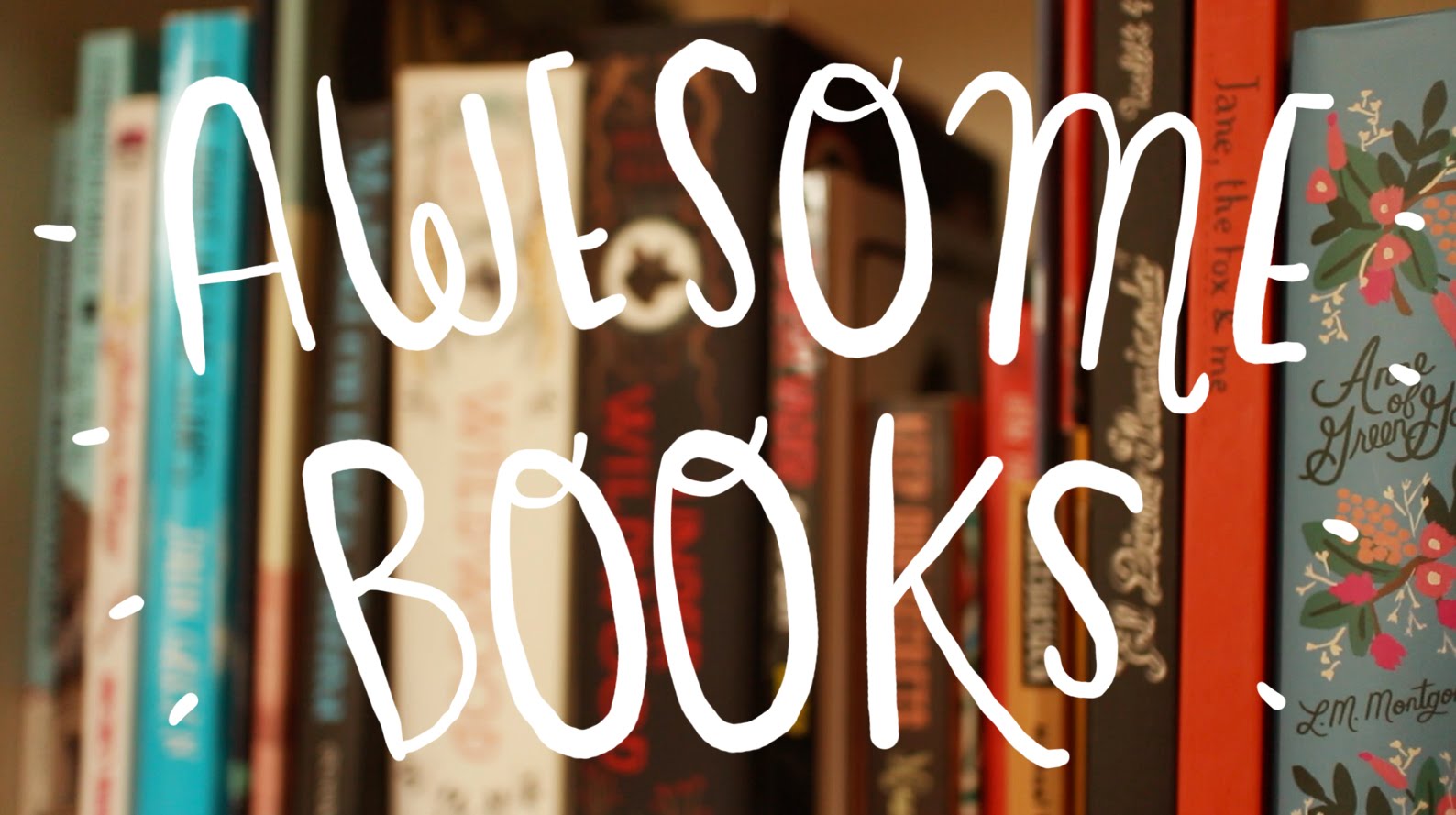 This month's Round Robin Blog Hop is about - How do you ensure a story has a good beginning, a satisfying ending, and good continuity in between? This month's Round Robin Blog Hop is about - How do you ensure a story has a good beginning, a satisfying ending, and good continuity in between?
My initial answer to this question is a lot of hard work and clear-sighted editing. Although up to now all my published works have been written more or less by the seat of my pants, I always had a very clear idea of where and how the book was going to end. But getting sidetracked getting there was pretty easy. I’m guessing that plotting, the more detailed the plotting, would be less likely to require a vicious pruning when the edits begin, but either way, pruning is required. More about that later…
My beginnings are usually pretty clear in my mind long before I start writing. Whenever a brilliantly seductive story idea comes to me, it usually arrives in the form of a detailed opening scene. I have a whole file filled with such scenes that I write down as soon as they come to me including all the details that I see in my mind and adding notes on where the story might go from there. When I’m ready to take one of these ideas and run with it, I  start by fleshing out my main character or characters with in-depth backstories. Over the years I’ve collected a few different character questionnairs that help me discover who these people are, where they came from, what they want most, what they fear and who they love or have loved in the past. Then I’m ready to write. I put my characters in the opening scene and let them run with it. Sometimes that opening scene is just as compelling as it was when I first had the idea. Sometimes it takes some serious repair. start by fleshing out my main character or characters with in-depth backstories. Over the years I’ve collected a few different character questionnairs that help me discover who these people are, where they came from, what they want most, what they fear and who they love or have loved in the past. Then I’m ready to write. I put my characters in the opening scene and let them run with it. Sometimes that opening scene is just as compelling as it was when I first had the idea. Sometimes it takes some serious repair.
 One of the things I find most helpful in avoiding a sagging middle and filling in gaps from the opening to the closing of the book is my wonderful brainstorming group, the Sandy Scribblers. We meet once a month (Although they are always there via email to jump in with suggestions, opinions and answers along the way.) Our meetings are pretty losely organized and we each get our share of meeting time to discuss where we are with our story and how it’s developing. Even if no one has any real input, just verbalizing out loud what’s going on in my story often helps me see gaping holes that I know I need to work on when I get home. Other times I am struggling with some aspect of the story, or a character development issue and I toss my delimna out for the group. It’s amazing the ideas that come when four creative minds start throwing thoughts and what-ifs out there and reacting to each other. Those days I scribble notes like crazy and come home with the bit between my teeth and ready to run. One of the things I find most helpful in avoiding a sagging middle and filling in gaps from the opening to the closing of the book is my wonderful brainstorming group, the Sandy Scribblers. We meet once a month (Although they are always there via email to jump in with suggestions, opinions and answers along the way.) Our meetings are pretty losely organized and we each get our share of meeting time to discuss where we are with our story and how it’s developing. Even if no one has any real input, just verbalizing out loud what’s going on in my story often helps me see gaping holes that I know I need to work on when I get home. Other times I am struggling with some aspect of the story, or a character development issue and I toss my delimna out for the group. It’s amazing the ideas that come when four creative minds start throwing thoughts and what-ifs out there and reacting to each other. Those days I scribble notes like crazy and come home with the bit between my teeth and ready to run.
 Endings need to leave the reader feeling satisfied. In a romance it has to be happy ever after. (And never kill the family dog.) In a suspense or adventure, your protagonist needs to have overcome all the obstacles you threw in his or her way in a believable way and the bad guy vanquished – if not dead. In this kind of series, the disastert the hero or heroine struggled througout the book to avert must be averted but the bad guy might live to fight another day in Endings need to leave the reader feeling satisfied. In a romance it has to be happy ever after. (And never kill the family dog.) In a suspense or adventure, your protagonist needs to have overcome all the obstacles you threw in his or her way in a believable way and the bad guy vanquished – if not dead. In this kind of series, the disastert the hero or heroine struggled througout the book to avert must be averted but the bad guy might live to fight another day in 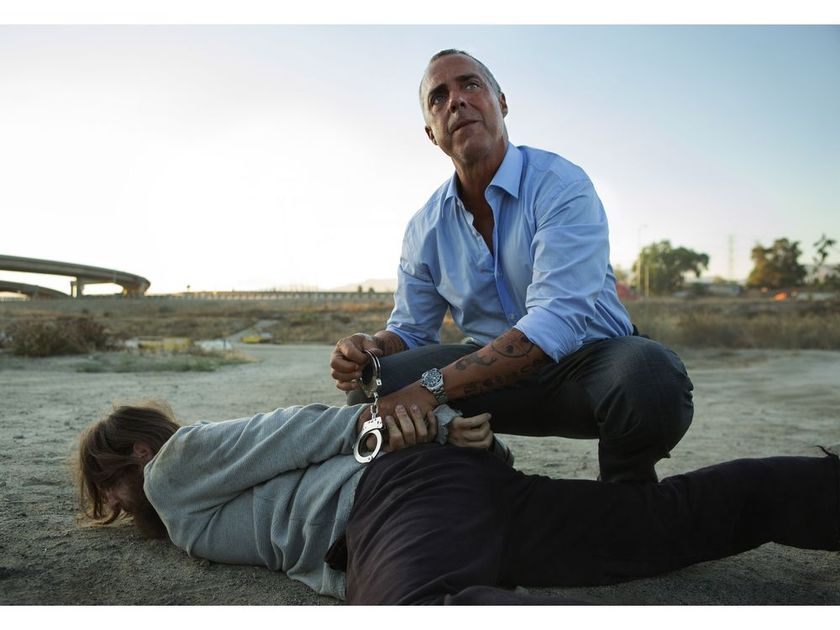 the next book. Mysteries must be unravelled and Who-done-its revealed even if the protagonist (in a series) carries his or her personal demons forward into the next book. Whatever your genre, the best endings leave the reader scrambling to see if you’ve another book out that they haven’t read yet. the next book. Mysteries must be unravelled and Who-done-its revealed even if the protagonist (in a series) carries his or her personal demons forward into the next book. Whatever your genre, the best endings leave the reader scrambling to see if you’ve another book out that they haven’t read yet.
How do I make sure all these things happen?
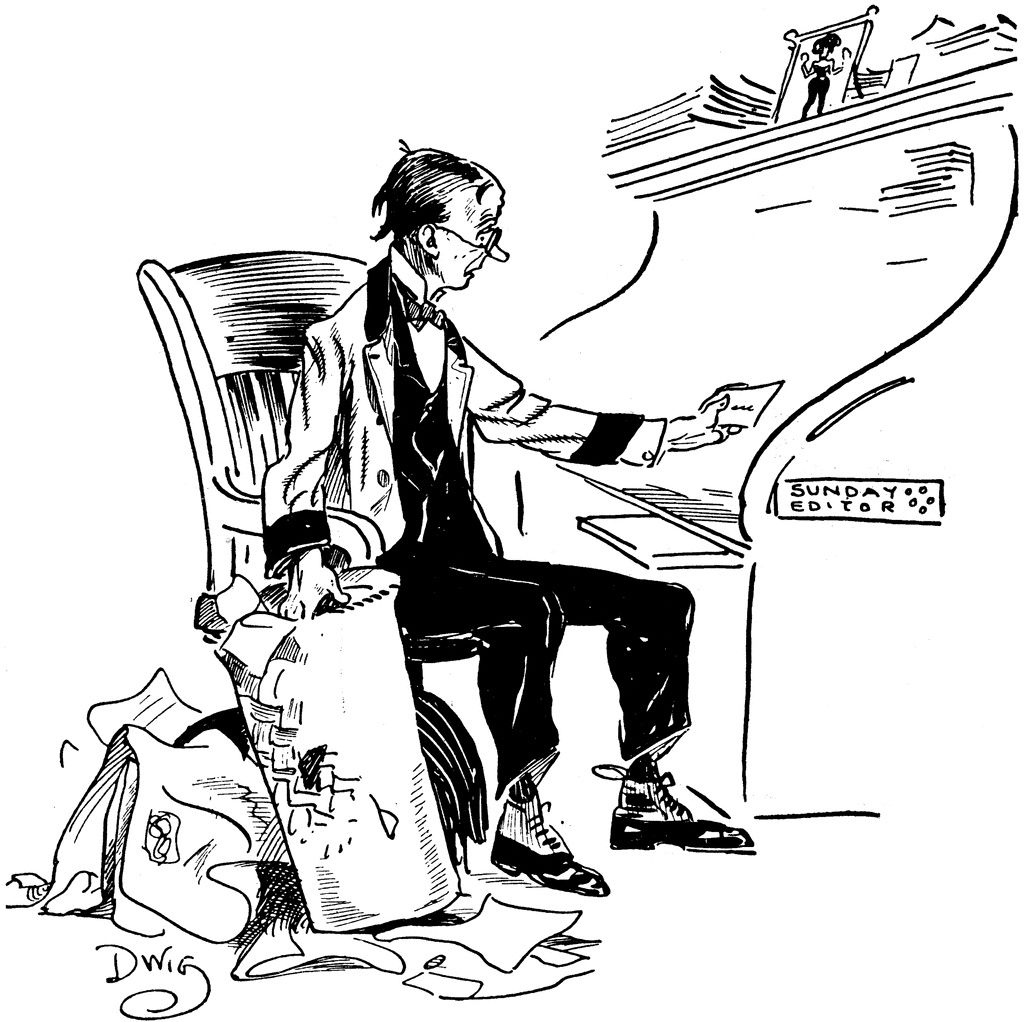 Once I am done with my first draft, I nearly always have a raft of things I already know I need to fix, add, delete or change, but I set the story aside for a few days and embark on something unrelated. Then I take that notebook of fixes and do my first big revision. Now it’s time to send the manuscript out to my beta readers. They aren’t necessarily doing a detailed critique, although sometimes they do that too. What they are doing is looking for that BAM! Beginning, the continuity and the satisfying ending. And they are honest with me about their reactions, and I’m back to the editing and that pruning I mentioned earlier. I might have some wonderfully, cleverly, brilliant passages, sparkling dialog or scenes I thought anyone would just fall into and feel like they were there. But if my beta readers tell Once I am done with my first draft, I nearly always have a raft of things I already know I need to fix, add, delete or change, but I set the story aside for a few days and embark on something unrelated. Then I take that notebook of fixes and do my first big revision. Now it’s time to send the manuscript out to my beta readers. They aren’t necessarily doing a detailed critique, although sometimes they do that too. What they are doing is looking for that BAM! Beginning, the continuity and the satisfying ending. And they are honest with me about their reactions, and I’m back to the editing and that pruning I mentioned earlier. I might have some wonderfully, cleverly, brilliant passages, sparkling dialog or scenes I thought anyone would just fall into and feel like they were there. But if my beta readers tell  me they don’t move the story forward and dragged them down, they have to go. Clip! Clip! If I’ve got big holes where my readers didn’t get why my hero did this, or my heroine thought that, then I know I left stuff out that my reader needed. Or maybe I need to rethink what my hero did or my heroine thought. Maybe it doesn’t make sense and I need to figure out why. Time to go back and add the things I’d skipped blithely over because I was too close to the story. It’s a matter of seeing the forest for the trees. me they don’t move the story forward and dragged them down, they have to go. Clip! Clip! If I’ve got big holes where my readers didn’t get why my hero did this, or my heroine thought that, then I know I left stuff out that my reader needed. Or maybe I need to rethink what my hero did or my heroine thought. Maybe it doesn’t make sense and I need to figure out why. Time to go back and add the things I’d skipped blithely over because I was too close to the story. It’s a matter of seeing the forest for the trees.
If an author is honest about their work, they can read their own book and ask themselves as they go, “Does this scene really drive the plot forward?” “Does it tell the reader something they really need to know?” Or, “Are these wasted words, however cleverly written?” It’s probably a little harder to ask yourself if this beginning grabs you and won’t let go because it obviously grabbed you enough to devote all those hours to writing the rest of the story, but ask yourself, if this was a book on a shelf I was thinking about buying, would I put the book down after reading those first few paragraphs? Or would I head to the cashier with it? Be brutal with your answers because the readers will be. There are millions of books vying for their attention so if you haven’t really, REALLY grabbed them in that first few paragraphs, they’ll never find out how wonderful the rest of the story turned out.
 Wonder how these other authors get their beginnings, middles and endings right? Check them out. Wonder how these other authors get their beginnings, middles and endings right? Check them out.
Anne de Gruchy
Marci Baun
Judith Copek
Margaret Fieland
Dr. Bob Rich
A.J. Maguire
Beverley Bateman
Rhobin L Courtright
Saturday, April 21 2018
How do authors establish a story, its characters, and setting?
.
 Stories don’t just appear in an author’s head, fleshed out with three-dimensional characters in a lush and well-defined setting. As we’ve discussed before, story ideas come from any number of places: overheard conversations, the front page of the daily paper and the latest scandal in Washington or Hollywood, our neighborhoods, childhoods and a dozen other places. But turning those ideas into a novel is a blending of the characters and the setting. Stories don’t just appear in an author’s head, fleshed out with three-dimensional characters in a lush and well-defined setting. As we’ve discussed before, story ideas come from any number of places: overheard conversations, the front page of the daily paper and the latest scandal in Washington or Hollywood, our neighborhoods, childhoods and a dozen other places. But turning those ideas into a novel is a blending of the characters and the setting.
.
Recently I mentioned how the idea came to me for my time travel, IAIN’S PLAID, but once my heroine had traveled into the  past the historical events of that time became part of her story and in researching those years, other ideas came to me. My heroine was faced with a world on the verge of war and her knowledge of the outcome helped to create her character, but as knowledgeable as she was about the history of that time, the reality of being there drove her story, changed her goals and perspective. Once I knew she was going to land in 1775 and because I grew up near Boston Massachusetts, there was plenty of “setting” to color her world, create conflict for her and flesh out that initial idea into an amazing adventure. past the historical events of that time became part of her story and in researching those years, other ideas came to me. My heroine was faced with a world on the verge of war and her knowledge of the outcome helped to create her character, but as knowledgeable as she was about the history of that time, the reality of being there drove her story, changed her goals and perspective. Once I knew she was going to land in 1775 and because I grew up near Boston Massachusetts, there was plenty of “setting” to color her world, create conflict for her and flesh out that initial idea into an amazing adventure.
.
In my first novel, THE CANDIDATE, the idea for my hero to be handed a photo that caught him off guard, jerking him back to a time he’d  done everything to forget, and to emotions he never wanted to relive came to me after I saw the stage play Miss Saigon. Then I decided to place him in the midst of a hotly contested race for the White House, so that the photo and the man who brought it to him challenged everything Matt Steele thought he knew about himself, and the choice he faces, to put honor on the line could change the outcome of the election. Given that premise, the venue was mostly Washington, DC. I’ve been in DC many times and over the course of writing the novel, I visited three more times. Being able to walk the streets and corridors of our nation’s capitol as I put my story together made creating the setting much richer. Being a story set in today’s world, there were dozens of ideas taken from current events to help me create the characters and their world. done everything to forget, and to emotions he never wanted to relive came to me after I saw the stage play Miss Saigon. Then I decided to place him in the midst of a hotly contested race for the White House, so that the photo and the man who brought it to him challenged everything Matt Steele thought he knew about himself, and the choice he faces, to put honor on the line could change the outcome of the election. Given that premise, the venue was mostly Washington, DC. I’ve been in DC many times and over the course of writing the novel, I visited three more times. Being able to walk the streets and corridors of our nation’s capitol as I put my story together made creating the setting much richer. Being a story set in today’s world, there were dozens of ideas taken from current events to help me create the characters and their world.
.
 My contemporary romance series, The Camerons of Tide’s Way, got off to a rather different start. The first book in the series was written on a dare. Could I actually write a contemporary romance? It was a trial and error endeavor. I created a hero and heroine and gave them conflicting goals and then just started writing – by the seat of my pants. I have mentioned that I’m a pantser, right? The book was written, pitched and even optioned by an editor, but the one thing seriously missing was the My contemporary romance series, The Camerons of Tide’s Way, got off to a rather different start. The first book in the series was written on a dare. Could I actually write a contemporary romance? It was a trial and error endeavor. I created a hero and heroine and gave them conflicting goals and then just started writing – by the seat of my pants. I have mentioned that I’m a pantser, right? The book was written, pitched and even optioned by an editor, but the one thing seriously missing was the  setting. It could have been anywhere USA. But my editor wanted to “feel” where it was. Since I love the ocean and have lived reasonably near it all my life, I ended up choosing a fictitious sea-side small town somewhere in North Carolina. Again, I visited the area, talked to folk who lived there, took dozens of photos and found myself another author who was a life-long resident of North Carolina to be my go-to person for dialect, diet, flora and fauna and a hundred other setting type bits of information. setting. It could have been anywhere USA. But my editor wanted to “feel” where it was. Since I love the ocean and have lived reasonably near it all my life, I ended up choosing a fictitious sea-side small town somewhere in North Carolina. Again, I visited the area, talked to folk who lived there, took dozens of photos and found myself another author who was a life-long resident of North Carolina to be my go-to person for dialect, diet, flora and fauna and a hundred other setting type bits of information.
.
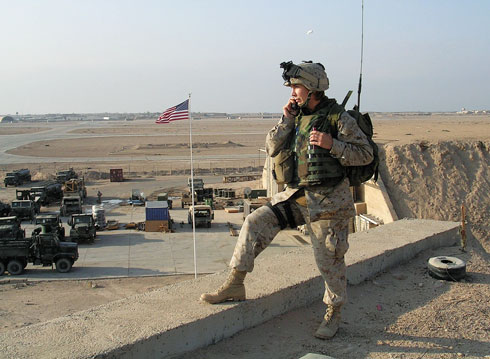 But setting is more than just the place in time, or the physical location. It’s also what your characters are doing? What are their careers? What do they do for fun? If your character is a Marine, as some of mine have been, it’s important to understand the world of a Marine, from his or her mindset, which will be different than a civilian, to the clothing they wear and the hierarchy of leadership. A military world is very different than a civilian one But setting is more than just the place in time, or the physical location. It’s also what your characters are doing? What are their careers? What do they do for fun? If your character is a Marine, as some of mine have been, it’s important to understand the world of a Marine, from his or her mindset, which will be different than a civilian, to the clothing they wear and the hierarchy of leadership. A military world is very different than a civilian one  even if both of them exist side by side in the same physical location. The same would be true for law enforcement or the medical or legal professions. Living and working in a courtroom is a very different setting than that of an office in a brokerage house, and those differences in setting will help to drive the plot as well as define the characters. even if both of them exist side by side in the same physical location. The same would be true for law enforcement or the medical or legal professions. Living and working in a courtroom is a very different setting than that of an office in a brokerage house, and those differences in setting will help to drive the plot as well as define the characters.
.
 I think research is a MUST for a writer. They tell you to write what you know, but let’s face it, after the first couple books you can’t keep giving all your characters the same career, or family life, or back story. Research is obvious for anyone writing a novel in a historical setting, but it’s just as important for those who write in the world they live in today. My newest project is a mystery that I hope will become a series. As part of that research, I signed up for a ride-along with a deputy sheriff from my county. When he picked me up, I had a notebook full of questions to help me get the setting and the job done right. But in the course of the seven hours I spent in the front seat of his cruiser listening to his answers and other stories he chose to tell, whole new ideas for conflict popped into my head. I was fortunate to be paired I think research is a MUST for a writer. They tell you to write what you know, but let’s face it, after the first couple books you can’t keep giving all your characters the same career, or family life, or back story. Research is obvious for anyone writing a novel in a historical setting, but it’s just as important for those who write in the world they live in today. My newest project is a mystery that I hope will become a series. As part of that research, I signed up for a ride-along with a deputy sheriff from my county. When he picked me up, I had a notebook full of questions to help me get the setting and the job done right. But in the course of the seven hours I spent in the front seat of his cruiser listening to his answers and other stories he chose to tell, whole new ideas for conflict popped into my head. I was fortunate to be paired  with a man who had 17 years of experience, had done undercover work, been an investigator, been in two gun fights and managed to save the life of another deputy in one of them among other things. He had lots of interesting stuff to impart. I also got to watch him in action, not just “on the job” but interacting with his fellow deputies and with supervisors. It was one of the most interesting research experiences I’ve had and he ended it with passing along his email address and cell number, inviting me to contact him any time with other questions. with a man who had 17 years of experience, had done undercover work, been an investigator, been in two gun fights and managed to save the life of another deputy in one of them among other things. He had lots of interesting stuff to impart. I also got to watch him in action, not just “on the job” but interacting with his fellow deputies and with supervisors. It was one of the most interesting research experiences I’ve had and he ended it with passing along his email address and cell number, inviting me to contact him any time with other questions.
.
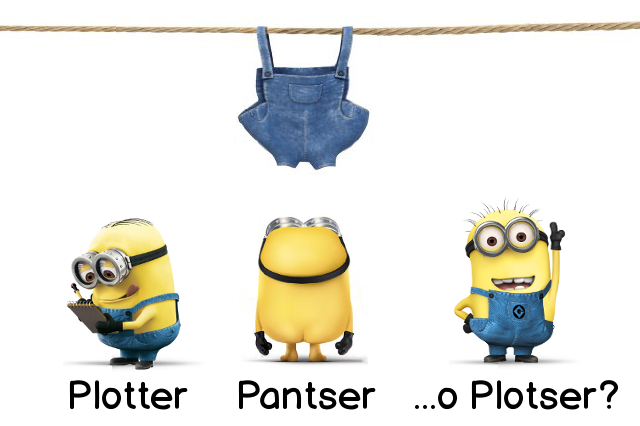 Do I have a method for creating my characters, settings and stories? My first thought about that was no. I’m a pantser. I just write what comes into my head, but as I wrote this blog, I realized that it’s not as undisciplined as that. I don’t write detailed outlines of my stories before I start writing, but I always have a vision of where and how my story is going to end, and in creating my setting and doing my research, I learn a whole lot more about the characters and what drives them, what they are afraid of and what brings them satisfaction and joy. Do I have a method for creating my characters, settings and stories? My first thought about that was no. I’m a pantser. I just write what comes into my head, but as I wrote this blog, I realized that it’s not as undisciplined as that. I don’t write detailed outlines of my stories before I start writing, but I always have a vision of where and how my story is going to end, and in creating my setting and doing my research, I learn a whole lot more about the characters and what drives them, what they are afraid of and what brings them satisfaction and joy.
.
 Why not hop on over and see how these other authors pull together their stories, characters and settings? Why not hop on over and see how these other authors pull together their stories, characters and settings?
Dr. Bob
A.J. Maguire
Marci Baun
Beverley Bateman
Margaret Fieland
Connie Vines
Rhobin L Courtright
Judy Copek
Saturday, March 24 2018
Hard to believe it’s been a month already since our last Round Robin Blog – of course February is a short month, but still! So here we are in March and this month our topic is: Where do our stories come from?
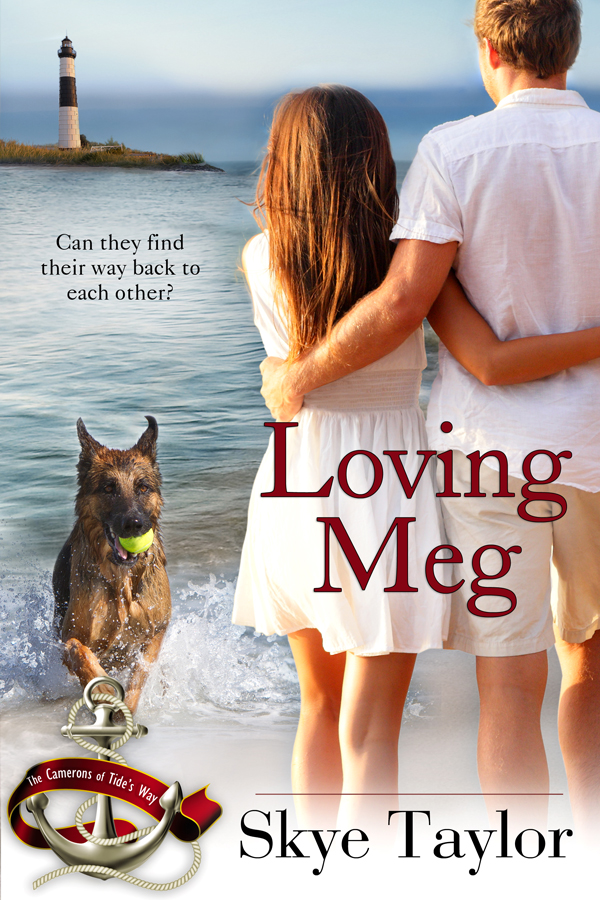 The short answer is everywhere. I’m a people watcher and some of my story ideas have come while watching people. I got one idea at an airport where I saw a woman waiting for someone and it turned out to be her soldier husband. The second book in my Camerons of Tide’s Way series, Loving Meg, begins with a man waiting for his wife to return from a year-long deployment. I switched it up so the woman was the Marine and the husband was the one left holding down the fort at home. The short answer is everywhere. I’m a people watcher and some of my story ideas have come while watching people. I got one idea at an airport where I saw a woman waiting for someone and it turned out to be her soldier husband. The second book in my Camerons of Tide’s Way series, Loving Meg, begins with a man waiting for his wife to return from a year-long deployment. I switched it up so the woman was the Marine and the husband was the one left holding down the fort at home.
 Another of my stories I think I’ve mentioned before blossomed in my brain as I stood on the brink of an old foundation wondering about the people who once lived on that island and what kind of building this particular foundation had been. It occurred to me suddenly, what if I fell into that old cellar hole, hit my head and woke up in another century with a roof over my head? Which is exactly what happened to my heroine in Iain’s Plaid when she sailed out to explore an abandoned island with a long and fascinating history. To read more about this fascinating island, click here: Damariscove. Another of my stories I think I’ve mentioned before blossomed in my brain as I stood on the brink of an old foundation wondering about the people who once lived on that island and what kind of building this particular foundation had been. It occurred to me suddenly, what if I fell into that old cellar hole, hit my head and woke up in another century with a roof over my head? Which is exactly what happened to my heroine in Iain’s Plaid when she sailed out to explore an abandoned island with a long and fascinating history. To read more about this fascinating island, click here: Damariscove.
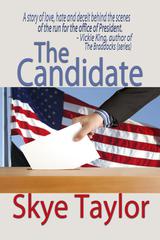 My first book, The Candidate (Originally Whatever It Takes) grew out of an idea that came to me after I’d been to see Miss Saigon, but much of the story idea came from a combination of news stories that were current at the time and stories my brother told me about his time in Vietnam and since returning home. My premise was what if a candidate for president was suddenly faced with memories from his past that threatened to undo him and everything he thought he knew about himself in the middle of his campaign? He had to have an opponent so I decided to make it a three-way race for the White House and got ideas for the other two candidates right from the front pages of the news. My first book, The Candidate (Originally Whatever It Takes) grew out of an idea that came to me after I’d been to see Miss Saigon, but much of the story idea came from a combination of news stories that were current at the time and stories my brother told me about his time in Vietnam and since returning home. My premise was what if a candidate for president was suddenly faced with memories from his past that threatened to undo him and everything he thought he knew about himself in the middle of his campaign? He had to have an opponent so I decided to make it a three-way race for the White House and got ideas for the other two candidates right from the front pages of the news.
 Another story I’ve written but is as yet unpublished is a time travel idea that was sparked by a visit to a historic home in Camden Maine. There was a portrait on the wall that looked remarkably like the great great grandson. I turned that little detail into a portrait of a couple where the woman looked eerily like the woman who had just inherited the house from a great aunt. Another story I’ve written but is as yet unpublished is a time travel idea that was sparked by a visit to a historic home in Camden Maine. There was a portrait on the wall that looked remarkably like the great great grandson. I turned that little detail into a portrait of a couple where the woman looked eerily like the woman who had just inherited the house from a great aunt.
Sometimes when I'm writing a story, one or more of the secondary characters becomes so real to me that I just know I have to write his or her story sooner or later. Sometimes the ideas come to me while I'm walking on the beach. I had been 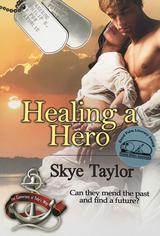 writing historical romances and just wanted to see if I could write a contemporary romance. I created the whole plot while wading in the surf one afternoon. When I pitched it, the acquiring editor wanted me to consider a series. My hero Jake had siblings so of course, they all had to have their own story. Book two, about Jake's brother, as mentioned above came from a homecoming I saw at the airport. The idea for book four, Jake's eldest brother, Healing a Hero, started with my interest and support of our military and the things they deal with both in and out of the service and parts of it were based on actual events that fit my timeline and story. writing historical romances and just wanted to see if I could write a contemporary romance. I created the whole plot while wading in the surf one afternoon. When I pitched it, the acquiring editor wanted me to consider a series. My hero Jake had siblings so of course, they all had to have their own story. Book two, about Jake's brother, as mentioned above came from a homecoming I saw at the airport. The idea for book four, Jake's eldest brother, Healing a Hero, started with my interest and support of our military and the things they deal with both in and out of the service and parts of it were based on actual events that fit my timeline and story.
 Sometimes I have a nugget of an idea – not really a whole story, but just a thought, that I take to my monthly brainstorming group we call the Magnificent Sandy Scribblers. I toss the idea out and we bat it back and forth. One of the ladies in this group I call Mayhem because she comes up with all the worst things that could happen. It’s a good balance for me as I tend to shelter my characters from serious hurt which kills the conflict. I come home with tons of possibilities and threads that sometimes lead to a whole story. Stories are all around us. In the newspaper, on TV, in the lives of our friends and neighbors and even in our own lives. Check out these other authors and see where they get their story ideas. Sometimes I have a nugget of an idea – not really a whole story, but just a thought, that I take to my monthly brainstorming group we call the Magnificent Sandy Scribblers. I toss the idea out and we bat it back and forth. One of the ladies in this group I call Mayhem because she comes up with all the worst things that could happen. It’s a good balance for me as I tend to shelter my characters from serious hurt which kills the conflict. I come home with tons of possibilities and threads that sometimes lead to a whole story. Stories are all around us. In the newspaper, on TV, in the lives of our friends and neighbors and even in our own lives. Check out these other authors and see where they get their story ideas.
 A.J. Maguire A.J. Maguire
Connie Vines
Anne de Gruchy
Helena Fairfax
Margaret Fieland
Dr. Bob Rich
Fiona McGier
Rhobin L Courtright
Saturday, February 24 2018
 This month's Round Robin blog is about: Your characters come from your mind, from other people you've witnessed, but can you create their lives without them revealing something about yourself? Have they ever taught you something? This month's Round Robin blog is about: Your characters come from your mind, from other people you've witnessed, but can you create their lives without them revealing something about yourself? Have they ever taught you something?
I have a feeling we all reveal some small bits about ourselves in all our characters, both the heroes and the villains. Often it’s not deliberate, or even noticed, but thoughts,  expressions, feelings, tics, histories, dreams, likes, dislikes, desires and fears sneak their way into the characters we create and torment for the next 200 or 300 pages. expressions, feelings, tics, histories, dreams, likes, dislikes, desires and fears sneak their way into the characters we create and torment for the next 200 or 300 pages.
As a romance writer, creating heroes always means giving them attributes that I find appealing which says a lot about what I find attractive in a man. It probably says something about the things the men in my life have failed at, too. For my heroines, it might be things I wish I was and know I’m not. Or she  might have a lot of the same desires, drives, dreams and flaws that I am so familiar with because I live them every day. might have a lot of the same desires, drives, dreams and flaws that I am so familiar with because I live them every day.
In any genre, including romance, there is usually a villain or an antagonist who can reveal something about the author, even when the author is the kindest of souls and would never for a moment consider doing any of the evil things the villain has in mind. Perhaps the villain threatens the thing the author is  most afraid of in his or her personal life. When I was a small child, my family was driving home after dark when a fire truck raced past and my father decided to follow it. When we got there the house was already engulfed in flames and we watched fascinated as the firefighters fought to quell the blaze. For years after that I had nightmares about my house burning down. Sometimes I was worried about my safety and my family. Sometimes I was more worried about all the things I might lose. How easy it would be for me to create a villain who happened to be an arsonist and in so doing, reveal all my personal horrors. most afraid of in his or her personal life. When I was a small child, my family was driving home after dark when a fire truck raced past and my father decided to follow it. When we got there the house was already engulfed in flames and we watched fascinated as the firefighters fought to quell the blaze. For years after that I had nightmares about my house burning down. Sometimes I was worried about my safety and my family. Sometimes I was more worried about all the things I might lose. How easy it would be for me to create a villain who happened to be an arsonist and in so doing, reveal all my personal horrors.
 Of course, some authors deliberately include themselves or their biases, political views and more. Sometimes a best-selling author might use their powerful far-reaching platform to advance a cause as Suzanne Brockmann has done to promote acceptance of the gay lifestyle. Other authors have used their knowledge of the inner workings of politics to write novels with a political agenda, either conservative or liberal. And of course, there are the memoirs that are all about the author to start with. Of course, some authors deliberately include themselves or their biases, political views and more. Sometimes a best-selling author might use their powerful far-reaching platform to advance a cause as Suzanne Brockmann has done to promote acceptance of the gay lifestyle. Other authors have used their knowledge of the inner workings of politics to write novels with a political agenda, either conservative or liberal. And of course, there are the memoirs that are all about the author to start with.
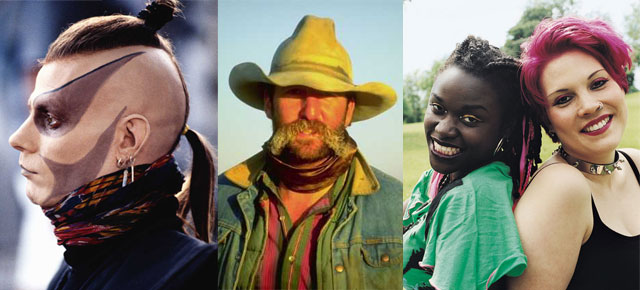 As for the question, have any of my characters taught me something? I can’t speak for all authors, but I have definitely learned from my characters, especially those who are very unlike myself, either in personality or in outlook and beliefs. If you deliberately choose to create a character who is of a different ethnic or religious background - I hope to God you have done the research - how can that character not teach you something? Perhaps tolerance for a different point As for the question, have any of my characters taught me something? I can’t speak for all authors, but I have definitely learned from my characters, especially those who are very unlike myself, either in personality or in outlook and beliefs. If you deliberately choose to create a character who is of a different ethnic or religious background - I hope to God you have done the research - how can that character not teach you something? Perhaps tolerance for a different point  of view, or acceptance of a different way of life. Even villains have their reasons and while some are just pure evil, most have something about them a reader and the author can relate to or have sympathy for. Nearly all my characters have taught me patience. I create them and love them, then I create a world of trouble for them to deal with, but real problems don’t go away overnight. I can’t write them out of trouble from one chapter to the next or I have no story so I have to be patient while they grow, get stronger, come to terms with life and triumph. of view, or acceptance of a different way of life. Even villains have their reasons and while some are just pure evil, most have something about them a reader and the author can relate to or have sympathy for. Nearly all my characters have taught me patience. I create them and love them, then I create a world of trouble for them to deal with, but real problems don’t go away overnight. I can’t write them out of trouble from one chapter to the next or I have no story so I have to be patient while they grow, get stronger, come to terms with life and triumph.
Why not hop on over and check out these authors and how they see themselves in their characters, or perhaps get a peek at what their characters have taught them.
A.J. Maguire
Marci Baun
Marie Laval
Judith Copek
Dr. Bob Rich
Rachael Kosinski
Beverley Bateman
Fiona McGier
Connie Vines
Rhobin L Courtright
Saturday, January 20 2018
 This month the subject of our Round Robin blog is Point of View. Interestingly, or coincidentally, my brainstorming group, The Sandy Scribblers discussed this very topic at our meeting earlier this week. This month the subject of our Round Robin blog is Point of View. Interestingly, or coincidentally, my brainstorming group, The Sandy Scribblers discussed this very topic at our meeting earlier this week.
If you’re an author, you’ve probably given this topic a lot of thought and have maybe tried writing in different points of view to see how it impacts giving the reader the information they need to know. If you’re a reader, you might very well have given the difference no thought at all, so long as you enjoyed the story and felt thoroughly engaged in the action.
.
 The basic points of view are omniscient or author point of view, third person from one or more characters’ points of view or first person, which is a single character’s point of view. As my Scribbler buddies mentioned, there is also second person. Not used in story telling, at least not very often, it’s more about instructional information: as in, “Once you have all the parts removed from the packing and spread out in front of you, look for part number one. This is your base.” Or “To get to the high school, you drive south on Main Street and you’ll want to get in the left hand lane so you can turn left on Market, then go two blocks and the school will be on your right. Good for telling someone how to get something done, but not so good for telling stories. The basic points of view are omniscient or author point of view, third person from one or more characters’ points of view or first person, which is a single character’s point of view. As my Scribbler buddies mentioned, there is also second person. Not used in story telling, at least not very often, it’s more about instructional information: as in, “Once you have all the parts removed from the packing and spread out in front of you, look for part number one. This is your base.” Or “To get to the high school, you drive south on Main Street and you’ll want to get in the left hand lane so you can turn left on Market, then go two blocks and the school will be on your right. Good for telling someone how to get something done, but not so good for telling stories.
.
 Omniscient is one way for the author to let the reader in on information that the characters may not know. Perhaps you’re reading a story where Jack is handed court documents that have to be delivered to the courthouse right away. “Jack’s assistant, who should have been around to run errands had fallen in the parking lot and was not at her desk. Jack needed to be in the judge’s chambers but the papers still needed to be delivered. He’d have to run them across the street himself.” If the next line is, “Little did Jack know this decision would change his life,” This is omniscient because there is no way Jack could know his decision and the result, good or bad, would turn out to be life-changing. He has no way of knowing why his assistant is not at her desk either. Omniscient is one way for the author to let the reader in on information that the characters may not know. Perhaps you’re reading a story where Jack is handed court documents that have to be delivered to the courthouse right away. “Jack’s assistant, who should have been around to run errands had fallen in the parking lot and was not at her desk. Jack needed to be in the judge’s chambers but the papers still needed to be delivered. He’d have to run them across the street himself.” If the next line is, “Little did Jack know this decision would change his life,” This is omniscient because there is no way Jack could know his decision and the result, good or bad, would turn out to be life-changing. He has no way of knowing why his assistant is not at her desk either.
.
 If Jack’s decision is being told in third person, it might read like this: “Jack hesitated. He was already running late. This was his assistant’s responsibility. Jack checked the woman’s cubicle, but it was empty. He sighed in irritation. He’d just have to run over to the courthouse himself and hope the judge wouldn’t be on time.” If Jack’s decision is being told in third person, it might read like this: “Jack hesitated. He was already running late. This was his assistant’s responsibility. Jack checked the woman’s cubicle, but it was empty. He sighed in irritation. He’d just have to run over to the courthouse himself and hope the judge wouldn’t be on time.”
.
First person it might read like this. “These damned court papers should have been delivered yesterday, not handed to me now. If I’m late in the judge’s office, I’ll get skinned alive. Where is that airhead assistant who’s supposed to be helping me out, anyway? This is her job. I sighed and headed back out the door, taking the stairs two at a time. Maybe Judge Henderson will be late, too.”
.
All of these tell the reader that Jack, presumably a lawyer or paralegal, has an assistant, that the assistant is a woman, but she’s not currently available, that he’s running late and has an important meeting with a judge, but now there are papers that need to be delivered to the courthouse right now. And they all tell the reader that Jack is stuck hurrying to get the papers delivered and hoping not to get in trouble with the judge. But which one draws you closer into the story? Which one puts you in Jack’s shoes and makes you feel his irritation?
.
 Until now, all my books have been written in third person in the character’s viewpoints. I have no need to foreshadow coming events. If they surprise the characters, then they’ll surprise the reader too, which is good. I want to SHOW my reader what’s happening, rather than tell him. I want my reader to feel what my character is feeling or at least have some sympathy for his problems. Until now, all my books have been written in third person in the character’s viewpoints. I have no need to foreshadow coming events. If they surprise the characters, then they’ll surprise the reader too, which is good. I want to SHOW my reader what’s happening, rather than tell him. I want my reader to feel what my character is feeling or at least have some sympathy for his problems.
.
But I love and have always enjoyed reading first person, too. It’s a hard option to write well and still get information about other characters, their feelings and thoughts across to the reader when you are always in the first person  character’s point of view. But when done right, it can draw the reader that much closer to the character. Being INSIDE the head of the point of view character, experiencing what they are thinking, feeling and seeing pulls me into the story, puts me right there, on the scene experiencing what the character is experiencing. So close that when the character has a close call, the I find myself holding my breath or puckering up for the kiss I can see and feel coming. character’s point of view. But when done right, it can draw the reader that much closer to the character. Being INSIDE the head of the point of view character, experiencing what they are thinking, feeling and seeing pulls me into the story, puts me right there, on the scene experiencing what the character is experiencing. So close that when the character has a close call, the I find myself holding my breath or puckering up for the kiss I can see and feel coming.
.
Here’s another example:
Omniscient or narrator point of view.
The woman walked through the early evening dusk as if there was no reason to fear anything, but this part of the park was off the beaten track and bad things had happened here before as dark closed in. Just a couple years ago, a teenager had disappeared never to be seen again in spite of exhaustive searches and pleas by her parents on the evening news. Of course, this woman hadn’t moved to Middletown yet, so she wouldn’t know about that.
Compare this third person – same scene.
 Katy walked cautiously through the growing gloom. She’d never heard about anything bad happening here, but it was spooky just the same. Things could hide in the lengthening shadows. Things that made strange whispering noises and made the hair on the back of her neck stand up. Maybe she should have gone the long way home. Katy walked cautiously through the growing gloom. She’d never heard about anything bad happening here, but it was spooky just the same. Things could hide in the lengthening shadows. Things that made strange whispering noises and made the hair on the back of her neck stand up. Maybe she should have gone the long way home.
Or same scene, first person:
The whispering sound came out of nowhere and my hair stood on end. I hesitated, heard nothing. What was I afraid of, anyway? That spooky sound is all in my imagination. I straightened my shoulders and marched on.
.
Which one makes you feel like you’re there? Right in that evening gloom and beginning to think you should have walked the long way home?
SO, that’s my opinion. Why not hop on over to these other blogs and see how other authors handle the choice of who’s point of view to tell a story in?
.

Dr. Bob Rich
Connie Vines
Helena Fairfax
Fiona McGier
Judith Copek
Marci Baun
Anne de Gruchy
A.J. Maguire
Anne Stenhouse
Beverley Bateman
Rhobin L Courtright
Diane Bator
|